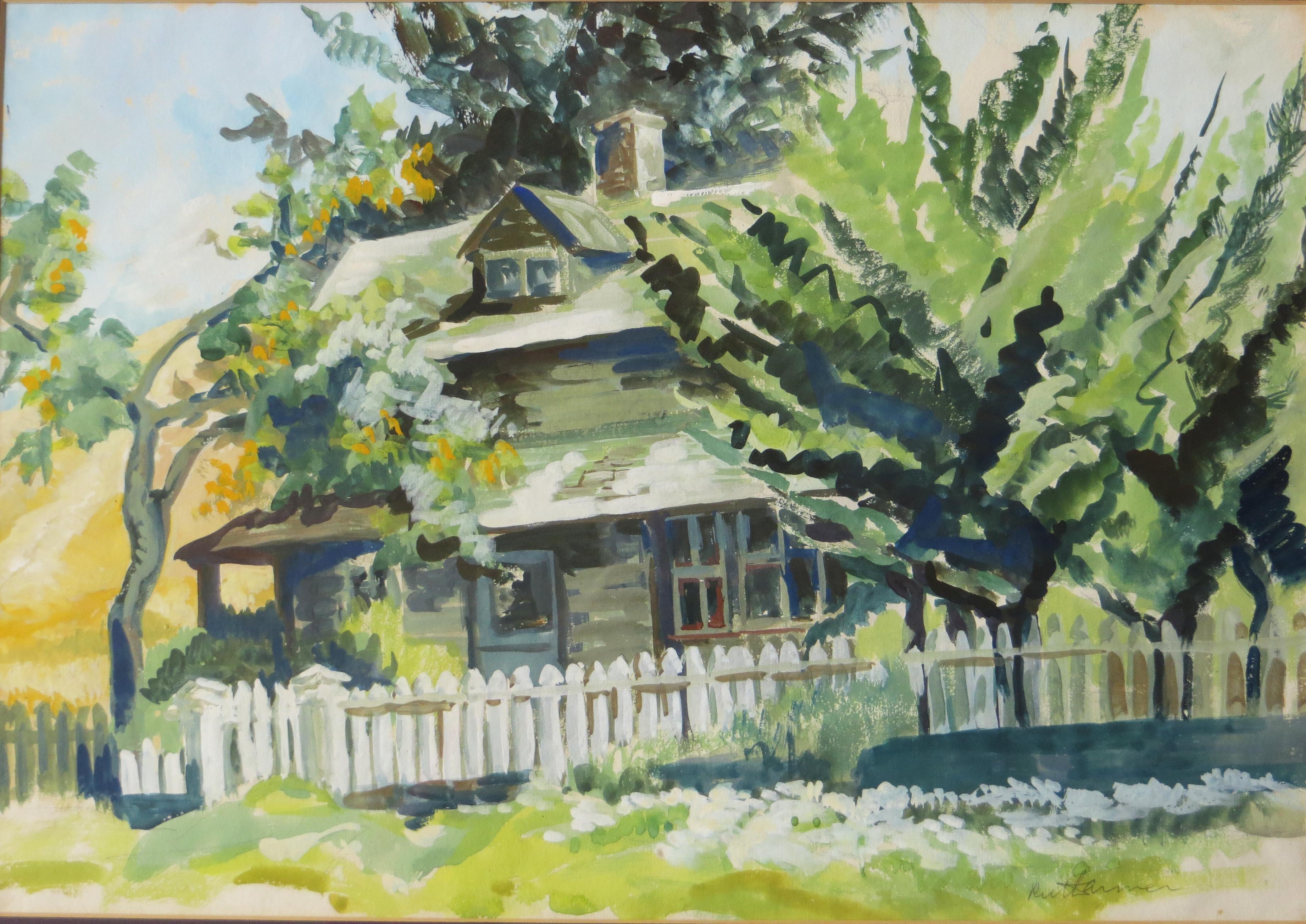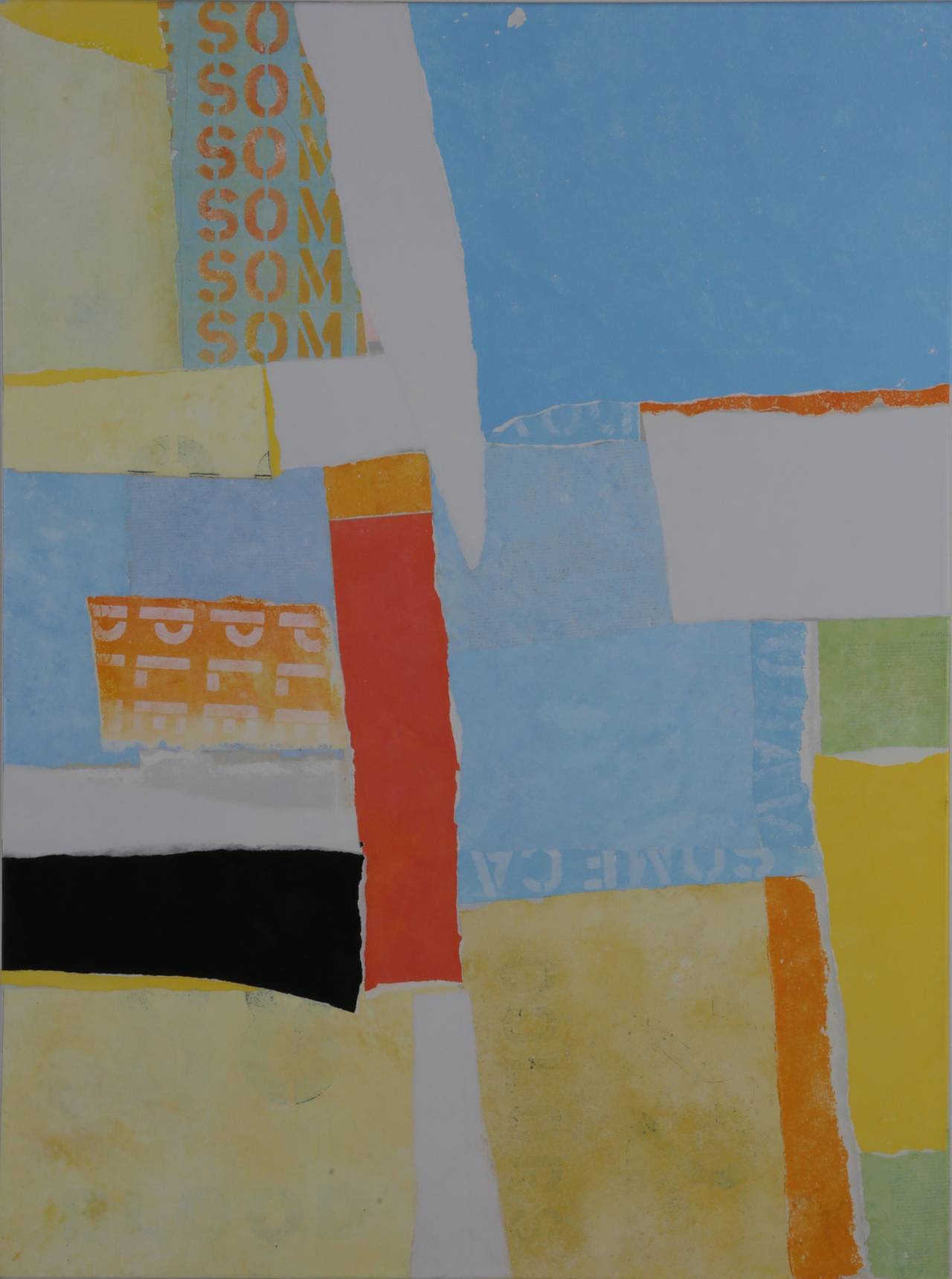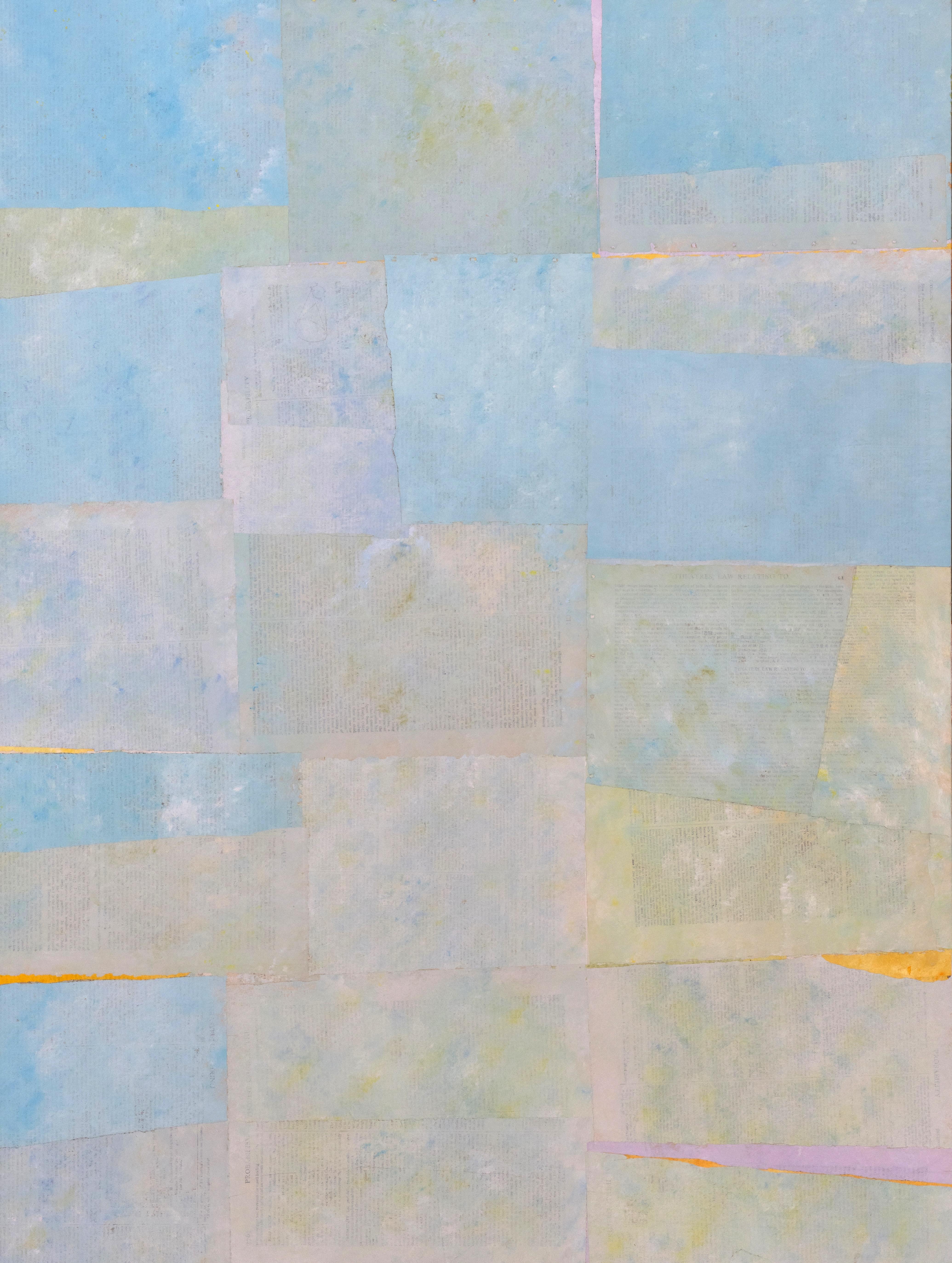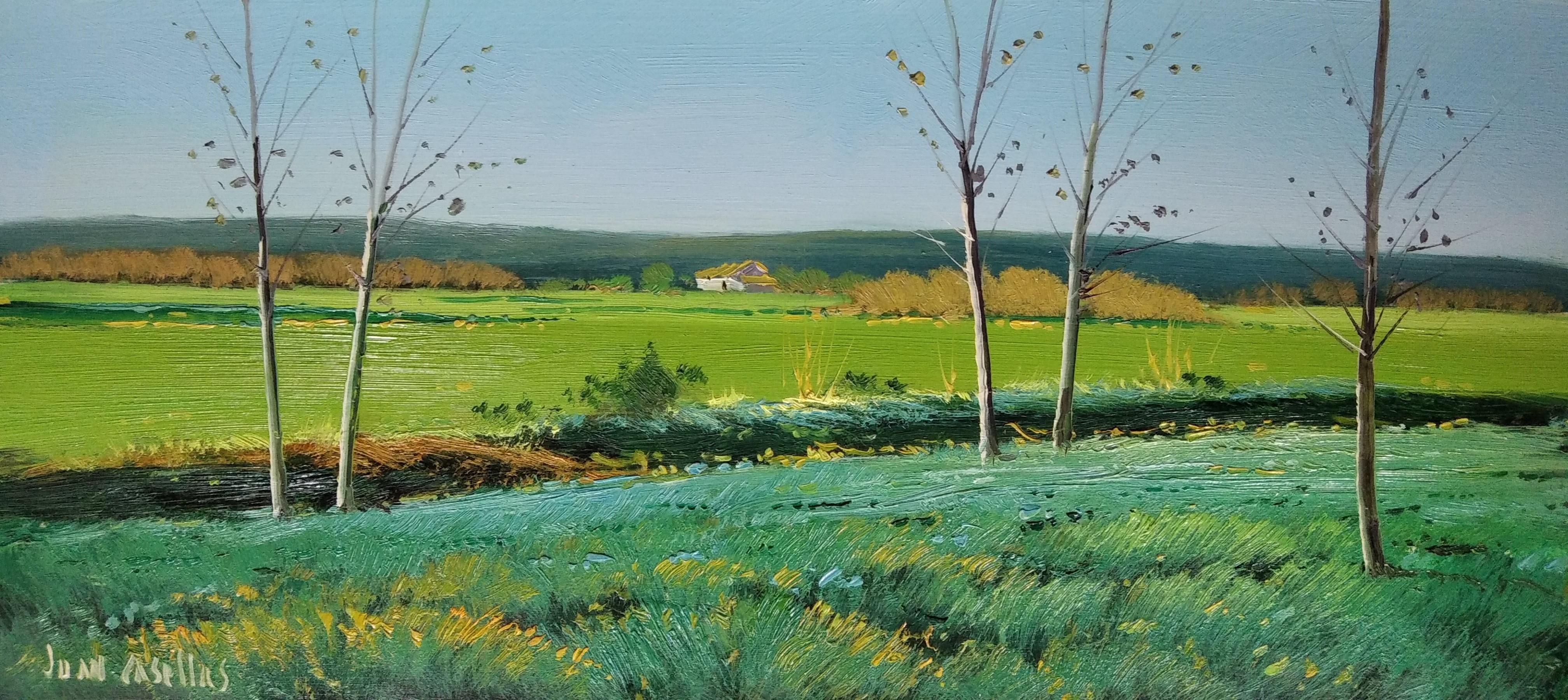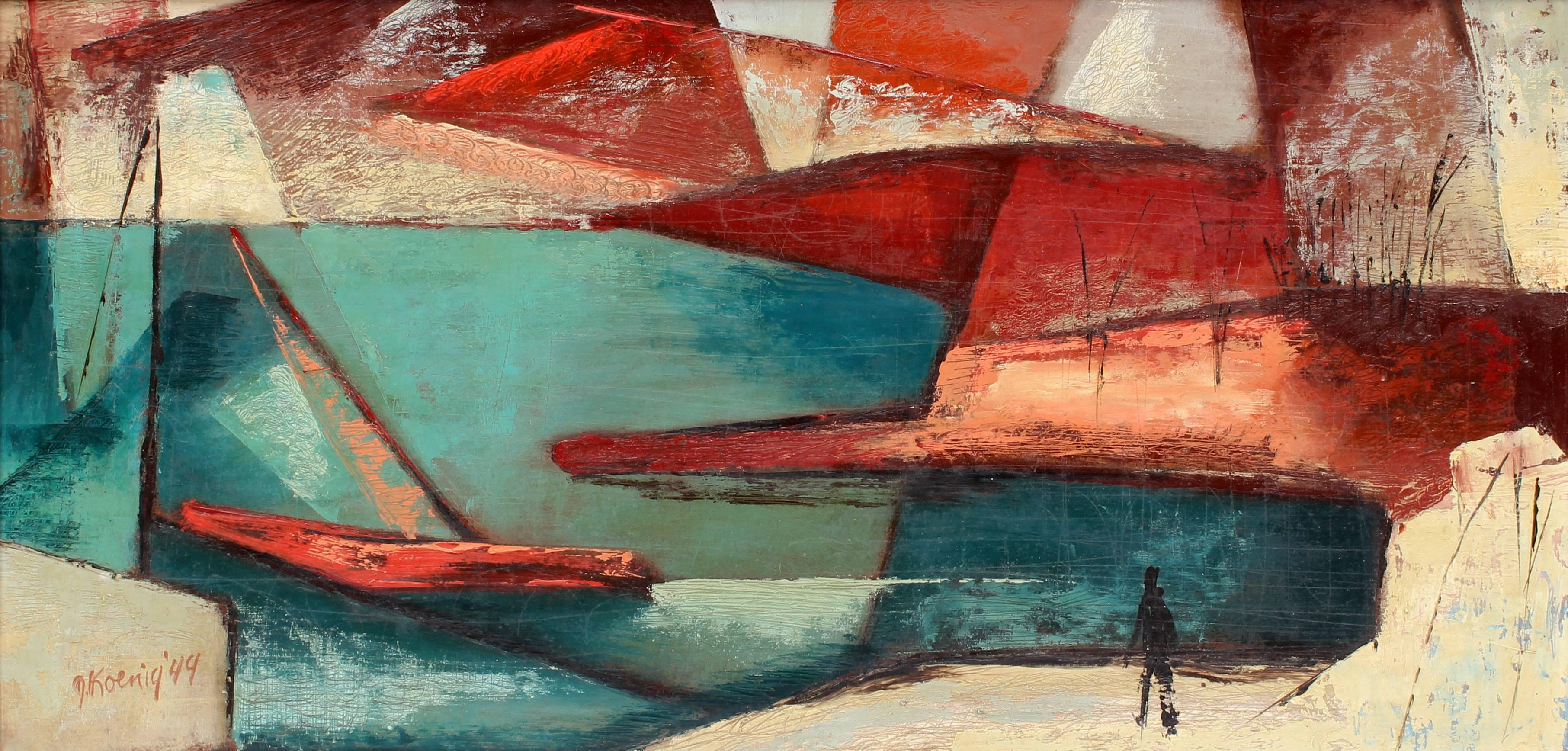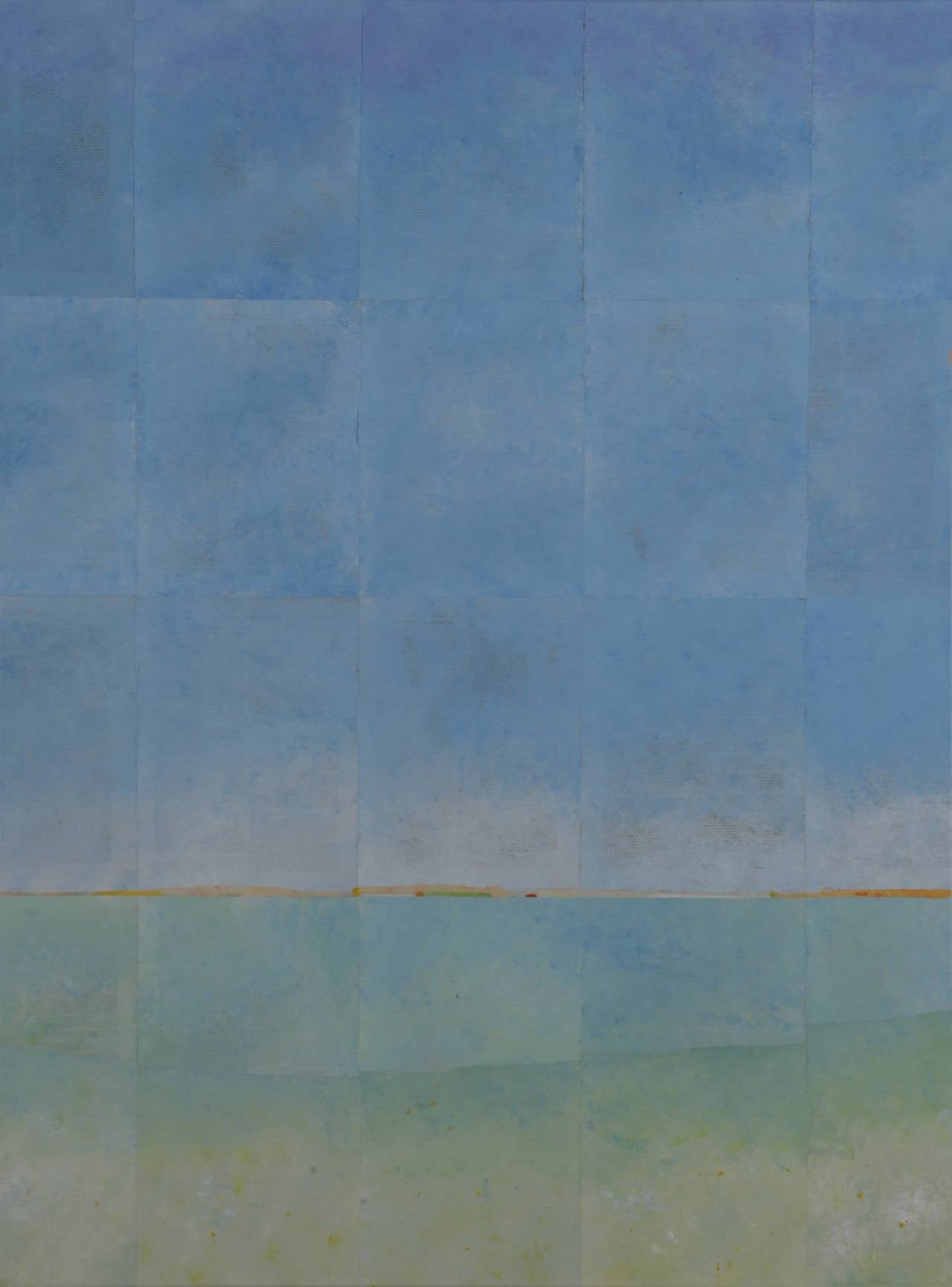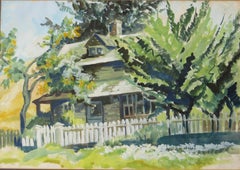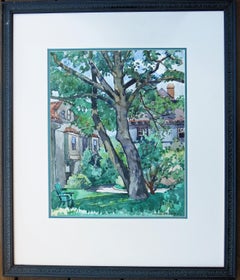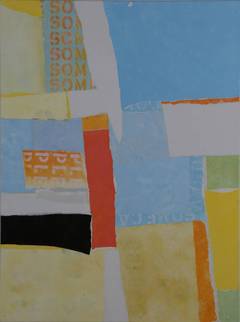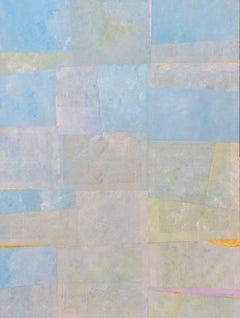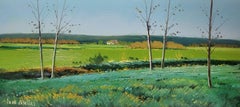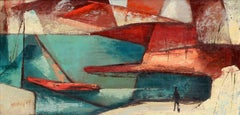Want more images or videos?
Request additional images or videos from the seller
1 of 8
Charles BurkUntitledcirca 1985
circa 1985
$600
£453.06
€525.64
CA$843.19
A$939.43
CHF 490.43
MX$11,405.94
NOK 6,164.35
SEK 5,826.81
DKK 3,923.82
About the Item
Artist: Charles Burk– American (1947-)
Title: Doorway, old Building
Year: unknown
Medium: Watercolor on watercolor paper
Size: 10 x 15 inches.
Framed size: 19 x 23.5 inches
Signature: Signed lower left
Condition: Very good
This painting depicts the rustic walls and doorway of an old abandoned building in the country. There is extensive use of light and shadow in the composition.
Charles S. Burk was born in 1947 in Albuquerque, New Mexico and is best known for his contemporary surreal landscapes usually with unique shapes and patterns and on a large scale. His work can be seen in the Albuquerque Art Museum and the University of New Mexico.
Charlie Burk
Born: 1947 Albuquerque, NM
Education
1973 BFA, University of New Mexico, Albuquerque, NM
Selected Exhibitions
2006 Solo-exhibition, Winterowd Fine Art, Santa Fe, NM
2005 Winterowd Fine Art, Santa Fe, NM
AAF Contemporary Art Fair, Pier 92, NYC, NY
2004 Winterowd Fine Art, Santa Fe, NM
2003 Solo-exhibition, Rick Moore Gallery, Santa Fe, NM
2001 Permanent Collection, Albuquerque Museum, NM
2000 Just Originals, Corporate Offices Gallery, Albuquerque, NM
Collection, Albuquerque Museum, NM
1997 Rocky Mountain NationalGolden, CO (also 1979, 80, 82, 85, 96 & 97)
1991 Solo-exhibition, Kyra Hidalgo, Houston, TX
1990 Two person show, Alpha Gallery, Denver, CO
Artists of the Southwest, Somerstown Gallery, Somers, NY
1989 Solo-exhibition Laurel Seth Gallery, Santa Fe, NM
1984 Solo-exhibition Iman Galleries, San Angelo, TX
1981 Solo-exhibition Kimball Art Center, Park City, UT
Western Federation Watercolor Society, Corpus Christi, TX (award)
1979 American Watercolor Society, New York, NY
1977 Watercolor in New Mexico, NM Museum of Fine Arts, Santa Fe, NM
1976 Allied Artists of America’s Exhibition, New York, NY
- Creator:Charles Burk (1947, American)
- Creation Year:circa 1985
- Dimensions:Height: 19 in (48.26 cm)Width: 23.5 in (59.69 cm)Depth: 2.25 in (5.72 cm)
- Medium:
- Movement & Style:
- Period:
- Condition:The painting is in very good condition. The oak frame is in good condition with a few tiny blemishes.
- Gallery Location:San Francisco, CA
- Reference Number:Seller: PM04272025-21stDibs: LU666316225692
About the Seller
5.0
Platinum Seller
Premium sellers with a 4.7+ rating and 24-hour response times
Established in 1999
1stDibs seller since 2017
825 sales on 1stDibs
Typical response time: 2 hours
- ShippingRetrieving quote...Shipping from: San Francisco, CA
- Return Policy
Authenticity Guarantee
In the unlikely event there’s an issue with an item’s authenticity, contact us within 1 year for a full refund. DetailsMoney-Back Guarantee
If your item is not as described, is damaged in transit, or does not arrive, contact us within 7 days for a full refund. Details24-Hour Cancellation
You have a 24-hour grace period in which to reconsider your purchase, with no questions asked.Vetted Professional Sellers
Our world-class sellers must adhere to strict standards for service and quality, maintaining the integrity of our listings.Price-Match Guarantee
If you find that a seller listed the same item for a lower price elsewhere, we’ll match it.Trusted Global Delivery
Our best-in-class carrier network provides specialized shipping options worldwide, including custom delivery.More From This Seller
View AllUntitled
By Ruth Armer
Located in San Francisco, CA
Artist: Ruth Armer – American (1896-1977)
Title: Untitled
Year: circa 1940
Medium: Watercolor and gouache on paper
Sight size: 13.75 x 19.5 inches.
Framed ...
Category
Mid-20th Century Modern Landscape Paintings
Materials
Paper, Watercolor, Gouache
Untitled
By Terry Leftrook
Located in San Francisco, CA
This artwork "Untitled #5" c.1980 is an original offset lithograph on wove paper by Canadian artist Terry Leftrook, born 1948. It is hand signed in pencil by the artist. The artwork...
Category
Late 20th Century Modern Abstract Prints
Materials
Offset
Untitled
By Terry Leftrook
Located in San Francisco, CA
This artwork "Untitled" 1987 is an original offset lithograph, with pastel addition on wove paper, by Canadian artist Terry Leftrook, born 1948. It is unsigned. The size is 24.85 x ...
Category
Late 20th Century Modern Abstract Prints
Materials
Mixed Media
Untitled
By Julius M. Delbos
Located in San Francisco, CA
Artist: Julius M. Delbos (Attributed to) – American (1879-1970)
Title: Untitled
Year: unknown circa 1950
Medium: Watercolor
Sight size: 17 x 13.75 inches.
Framed size: 28.75 x 24.25 inches
Signature: Signed lower right
Condition: Very good
Frame: Frame in good condition
This painting attributed to noted artist Julian Maximillian Delbos (1879-1970) depicts a garden scene with Mediterranean style buildings in the background. It is in very good condition. The colors are vibrant. The simple flat gray-black frame is in good condition with a few scratches and a very small separation in the upper right corner.
About the Artist:
Julius M. Delbos, born in 1879 in London, England, was a landscape painter, teacher, and lecturer. He was elected an Associate of the National Academy of Design, New York City, in 1945, an Academician in 1948. He was also a member of the American Watercolor Society; the New York Watercolor Club; the Society of Graphic Art; Old Dudley Art Society, London; American Artists Professional League; National Arts Club; and the Century Club...
Category
1950s Impressionist Landscape Paintings
Materials
Paper, Watercolor
Untitled III
By Joseph Zirker
Located in San Francisco, CA
Artist: Joseph Zirker (American, born 1924)
Title: Untitled
Year: 1988
Medium: Color monotype
Paper: Arche 88
Size: 42 x 30 inches
Signature: Signed and dated in pencil by the artist
Printer: The artist
Condition: Very good
Frame: Unframed
About the artist.
Joseph Zirker is a noted American modern artist, educator, lecturer that was born on August 13, 1924 in Los Angeles, California, United States. As a young man he Served with United States Navy, from 1944 to 1946.
He attended the University of California in Los Angeles 1946—1947. He got a bachelor of Fine Arts at the University of Denver in 1949 and a master of Fine Arts, University Southern California, 1951.
He was a printer and research fellow at Tamarind Lithography Workshop in Los Angeles, 1961—1963. Lecturer University Southern California, 1963. Instructor Los Angeles County Art Institute, 1964, San Jose City College, California, 1966—1980.
Lecturer Stanford University, 1981—1983, 1986—1990. All along his carer, he had numerous acclaimed shows in the U.S and abroad. He is known worldwide as an innovator in monotype and printmaking. His works are represented in private and public collections, both in the USA and worldwide, including:
Grunwald Collection, U.C.L.A., Los Angeles, California,
Brooklyn Museum, Brooklyn, New York
Free Library of Philadelphia, Pennsylvania
June Wayne, Tamarind Lithography Workshop, Los Angeles, California
Tamarind Archives, Tamarind Lithography Workshop, Los Angeles, California,
Charles White, Los Angeles, California
Stanley Freeman Collection, Los Angeles County Museum, Los Angeles, California
Ben Smith...
Category
Late 20th Century American Modern Abstract Prints
Materials
Monotype
Untitled II
By Joseph Zirker
Located in San Francisco, CA
Artist: Joseph Zirker (American, born 1924)
Title: Untitled
Year: 1988
Medium: Color monotype
Paper: Arche 88
Size: 42 x 30 inches
Signature: Signed and dated in pencil by the artist
Printer: The artist
Condition: Very good
Frame: Unframed
About the artist.
Joseph Zirker is a noted American modern artist, educator, lecturer that was born on August 13, 1924 in Los Angeles, California, United States. As a young man he Served with United States Navy, from 1944 to 1946.
He attended the University of California in Los Angeles 1946—1947. He got a bachelor of Fine Arts at the University of Denver in 1949 and a master of Fine Arts, University Southern California, 1951.
He was a printer and research fellow at Tamarind Lithography Workshop in Los Angeles, 1961—1963. Lecturer University Southern California, 1963. Instructor Los Angeles County Art Institute, 1964, San Jose City College, California, 1966—1980.
Lecturer Stanford University, 1981—1983, 1986—1990. All along his carer, he had numerous acclaimed shows in the U.S and abroad. He is known worldwide as an innovator in monotype and printmaking. His works are represented in private and public collections, both in the USA and worldwide, including:
Grunwald Collection, U.C.L.A., Los Angeles, California,
Brooklyn Museum, Brooklyn, New York
Free Library of Philadelphia, Pennsylvania
June Wayne, Tamarind Lithography Workshop, Los Angeles, California
Tamarind Archives, Tamarind Lithography Workshop, Los Angeles, California,
Charles White, Los Angeles, California
Stanley Freeman Collection, Los Angeles County Museum, Los Angeles, California
Ben Smith...
Category
Late 20th Century American Modern Abstract Prints
Materials
Monotype
You May Also Like
Untitled
By Charles Miesmer
Located in Fairfield, CT
Acrylic and paper on panel
Category
21st Century and Contemporary Contemporary Abstract Paintings
Materials
Mixed Media
Untitled
By Charlie Miesmer
Located in Fairfield, CT
Mixed media on panel
Category
2010s Contemporary Mixed Media
Materials
Mixed Media
Untitled
Located in Barcelona, BARCELONA
The painting is being offered with a work and authenticity certificate
Category
2010s Conceptual Landscape Paintings
Materials
Oil
Untitled
By James Koenig
Located in Buffalo, NY
An original oil on canvas painting by American artist James Koenig created in 1944.
Category
1940s American Modern Abstract Paintings
Materials
Canvas, Oil
Untitled
By Charles Miesmer
Located in Fairfield, CT
mixed media on canvas
Category
21st Century and Contemporary Contemporary Mixed Media
Materials
Mixed Media
Robert Mus Untitled 3
Located in Saint Ouen, FR
Robert Mus
Untitled 3
Oil, newspaper, curling, fabric and cardboard on Isorel
1968
Signed and dated lower right
104 x 73 cms
Certificate from the artist's daughter
1600 euros
Category
1960s Abstract Abstract Paintings
Materials
Paper
More Ways To Browse
Vintage Country Fair
Used Kimball
Mother Mary And Child
Painting Blanche American
Shepherd And Flock
17th Century Village Paintings
Antique Fishing Paintings
Castle Ruins
Clipper Painting
David Meyers
French Painting Horse And Carriage
Jardin Luxembourg Art
Large Vertical Landscape Oil Paintings
Lincolnshire Painting
Mountain Painting Alps
Paris Luxembourg Gardens Paintings
Paul Weber
Peter Arnold
